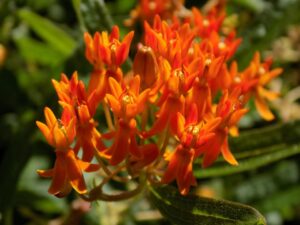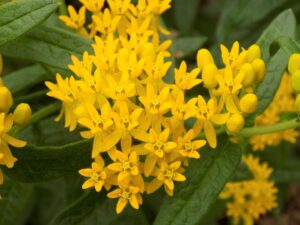Native versus Nativar: What’s the Difference and Does It Matter?
By Linda Shuster, WORC member
One dilemma that native plant gardeners face is how and where to acquire plants. As Heather McCargo notes in her article for Maine’s Wild Seed Project (https://wildseedproject.net/2022/02/navigating-the-nurseries-how-to-find-native-plants/), the number of small growers of nursery stock of any kind has shrunk considerably. Most nurseries these days are retail outlets, rather than growers, and big-box stores have undercut the market for local nurseries by selling plants for low prices. While there are local native plant nurseries, there are many fewer of them as compared to nurseries that sell non-native cultivated plants. However, as a result of the growing popularity of planting natives, many retail nurseries and big-box stores have begun to sell cultivated native plants.
Our scientific knowledge regarding the domestication of plants dates back to the work of Charles Darwin (Kantar et al., 2017). The basic process of domestication involves harvesting a plant from the wild followed by both the conscious and unconscious selection of plants to modify characteristics, such as flowering time, color, and plant structure. As the field of genetics has evolved, more sophisticated techniques have developed that allow breeders to manipulate a plant’s genes. Cultivar is the name for these plants that have been selected or bred for certain traits. When they are derived from a native plant, they are termed cultivated natives or nativars for short.
Although there has been some controversy regarding what constitutes a native plant, most authorities agree that true natives are plants that are found in the wild and reproduce without human intervention. Native plants are adapted to their habitat and have co-evolved with native insects and other invertebrates, which, in turn support birds and other animals. A critically important factor is the genetic diversity of native plants. In a particular population of plants, there will be diverse characteristics, such as size or the amount of nectar produced. If cultivation begins with a plant that is selected because of its large size, but it has less nectar than a smaller plant, it will not be as beneficial as that original native stand that had both the large and the nectar rich plants.
Native plant nurseries that sell true native species propagate plants using techniques such as planting seeds from responsibly harvested native plants. Once their stock is developed, they can harvest seeds from their own plants. Seeds provide genetic diversity because they contain a mixture of genetic material from their parent plants. The propagation of native plants is an art as well as a science!
Although research is ongoing, studies comparing the benefits of natives as compared to nativars have produced mixed results. For example, White (2016) studied 12 herbaceous native species and 14 nativars over a period of two years. She found that, while insect pollinators were more likely to visit seven of the true natives, four natives and their cultivars were visited equally by the pollinators, and one nativar was visited more frequently than the native species. Douglas Tallamy and colleagues have discovered that a critical factor for nativar development is which genetic characteristics are manipulated. In a study of several altered plant characteristics, they found that changing leaf color was the only deterrent to caterpillars feeding on leaves. These types of studies, which require long-term investigation, are very challenging to conduct. Clearly, it is a Herculean task to determine which nativars might be beneficial for our native landscape and which are not. The national Wild Ones has developed a position statement on the use of nativars, which can be found here: https://wildones.org/resources/nativars/. In it, they encourage the use of true natives, particularly in restoration efforts. We encourage our members to investigate the sources of plants before they purchase to ensure that they are getting what they intended.
Kantar, M.B. et al. (2017) The Genetics and Genomics of Plant Domestication, BioScience, 67(11),971–982, https://doi.org/10.1093/biosci/bix114
http://agebb.missouri.edu/agforest/archives/v25n3/gh3.php
From Nursery to Nature: Evaluating Native Herbaceous Flowering Plants Versus Native Cultivars for Pollinator Habitat Restoration,” Annie White, University of Vermont ScholarWorks @ UVM, Graduate College Dissertation and Theses (2016), scholarworks.uvm.edu › cgi › viewcontent
Bringing Nature Home, Douglas Tallamy, Timber Press, 2007
Native versus Nativar


